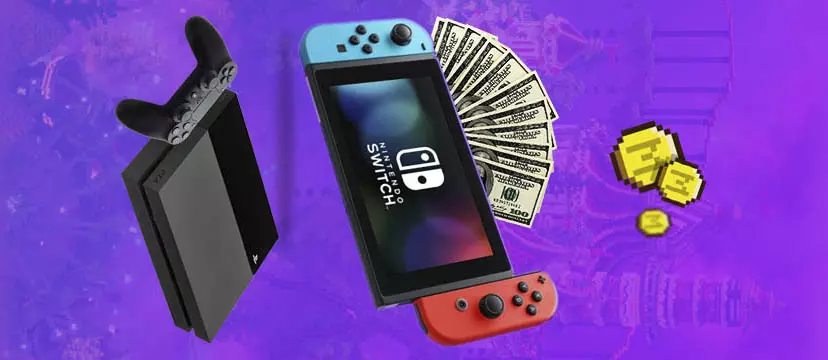Creating and managing a computer game project is an exciting journey that requires a blend of creativity, technical skill, and effective project management. This guide by Team Visionary will walk you through the essential steps to take your game from concept to completion.
- Conceptualization
Define the Game Idea
- Brainstorming: Gather your team to brainstorm ideas. Consider what genre of game you want to create, the target audience, and the core gameplay mechanics.
- Concept Document: Write a concept document outlining the game’s vision, story, characters, and key features. This document will serve as the foundation for your project.
Market Research
- Audience Analysis: Research your target audience’s preferences and gaming habits.
- Competitive Analysis: Analyze similar games in the market to identify what works and what doesn’t.
- Planning
Project Scope
- Define Scope: Clearly define the scope of your game to avoid scope creep. Determine what features are essential and what can be added later.
- Milestones and Deadlines: Set realistic milestones and deadlines to keep the project on track.
Budget and Resources
- Budgeting: Create a budget that includes costs for software, hardware, personnel, marketing, and unexpected expenses.
- Resource Allocation: Allocate resources efficiently. Ensure you have the right team members with the necessary skills.
- Pre-Production

Game Design Document (GDD)
- Detailed Design: Create a comprehensive Game Design Document. Include detailed descriptions of the gameplay mechanics, story, characters, levels, and user interface.
- Technical Specifications: Outline the technical requirements, such as the game engine, development tools, and platform specifications.
Prototyping
- Build Prototypes: Develop early prototypes to test core gameplay mechanics. This helps identify potential issues early on.
- Feedback Loop: Gather feedback from team members and potential players to refine the gameplay.
- Production
Development
- Agile Methodology: Use Agile development practices to iteratively build and test the game. Break the project into manageable sprints.
- Task Management: Use project management tools like Jira or Trello to track tasks and progress.
Asset Creation
- Art and Animation: Create game art, animations, and visual effects. Ensure a consistent art style throughout the game.
- Sound and Music: Develop or source sound effects and music that enhance the gaming experience.
Coding
- Core Mechanics: Focus on coding the core game mechanics first. Ensure the gameplay is fun and engaging.
- Optimization: Continuously optimize the code for performance and efficiency.
- Testing
Quality Assurance (QA)
- Internal Testing: Conduct thorough internal testing to identify and fix bugs.
- Beta Testing: Release a beta version to a limited audience to gather feedback and identify additional issues.
Polishing
- Refinements: Based on feedback, make necessary refinements to improve gameplay, graphics, and overall user experience.
- Final Testing: Perform final testing to ensure the game is ready for release.
- Launch
Marketing
- Marketing Plan: Develop a marketing plan that includes social media, influencer partnerships, press releases, and promotional events.
- Community Building: Engage with potential players through forums, social media, and gaming communities.
Distribution
- Platforms: Choose the platforms (e.g., Steam, Epic Games Store, consoles) for distribution.
- Release Strategy: Plan your release strategy, including pre-orders, launch events, and post-launch support.
- Post-Launch
Support and Maintenance
- Patch Updates: Regularly release patches to fix bugs and improve the game.
- Customer Support: Provide excellent customer support to address player issues and feedback.
Content Updates
- DLCs and Expansions: Plan and release downloadable content (DLC) and expansions to keep the game fresh and engaging.
- Community Engagement: Continue engaging with the community through updates, events, and new content.
Creating and managing a computer game project is a complex but rewarding endeavour. By following this comprehensive guide from Team Visionary, you can navigate the development process effectively and bring your game vision to life. Remember, flexibility and adaptability are key, as game development often requires adjustments and creative problem-solving.
Reasons Why Companies Choose Team Visionary
- Expertise and Experience
- Proven Track Record: Team Visionary has a history of successful projects, showcasing their expertise in Minecraft development. Our Minecraft Builder skills are second to none!
- Skilled Developers: The team consists of skilled developers who are proficient in creating custom Minecraft solutions tailored to client needs. Learn more with our handy guide on Minecraft building tips.
- Creativity and Innovation
- Creative Solutions: Team Visionary is known for its innovative and creative approach to problem-solving, delivering unique and engaging Minecraft experiences.
- Custom Content: They specialize in developing custom content that aligns perfectly with the client’s vision and objectives.
- Quality and Reliability: This is often seen with some of the rarest things in Minecraft!
- High Standards: Team Visionary maintains high standards of quality in their projects, ensuring that all solutions are polished and professional.
- Dependability: Clients can rely on Team Visionary to meet deadlines and deliver exceptional results consistently.
- Comprehensive Services
- End-to-End Solutions: From conceptualization to execution, Team Visionary provides comprehensive services covering all aspects of Minecraft development.
- Support and Maintenance: They offer ongoing support and maintenance to ensure the longevity and success of the project.
- Client-Centric Approach
- Tailored Solutions: Team Visionary works closely with clients to understand their specific needs and tailor solutions accordingly. From developing Minecraft mini-games to the latest Minecraft skin guide, we have all of the resources needed to make Minecraft magic happen.
- Collaboration and Communication: They prioritize clear communication and collaboration, ensuring clients are involved throughout the development process.
- Community Engagement
- Engagement Strategies: Team Visionary develops strategies to effectively engage the Minecraft community, driving participation and interest in the client’s project.
- Interactive Experiences: They create interactive experiences that captivate users and foster a sense of community around the client’s brand or cause.

Gamification cartoon
By choosing Team Visionary, corporate companies can leverage the expertise and creativity of a leading Minecraft development team to achieve their project goals and create memorable, impactful experiences within the Minecraft adventure map universe.
Why not read about the latest Team Visionary Minecraft house-building ideas or check out some reading materials from Amazon or a reputable Book Supplier?




